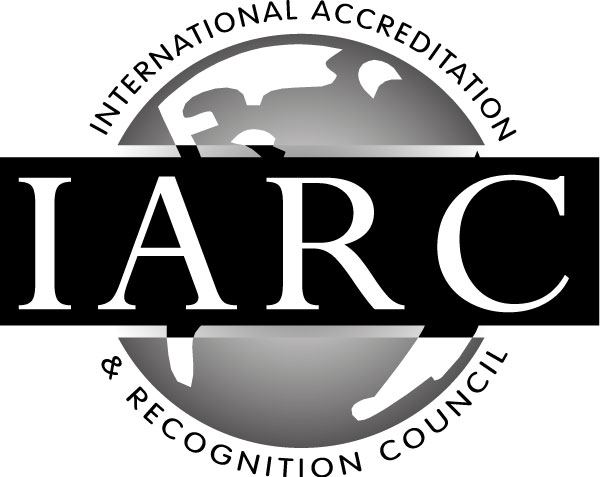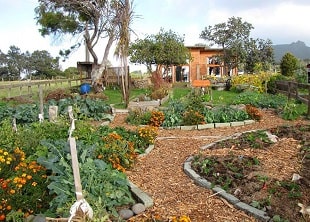Why study this Permaculture Systems course?
Interested in permaculture? Want to learn the different techniques, systems, and principles involved? Then, this permaculture systems course is for you!
Permaculture is a design philiosophy that enables sustainable living. The word Permaculture was coined by Bill Mollison & Dave Holmgren in the 1970’s. It is an abbreviation of the works “Permanent Agriculture”.
Permaculture holds three central tennants:
- Care of the Earth
- Care of People
- Return of any surplus
A permaculture system is a unique landscape where all the plants and animals live in balance in a self sustaining ecosystem. Permaculture has an ethical approach to designing land use and community systems, to provide food, ecological habitats and other essentials needed for human survival. Learning to develop plans for permaculture systems (ie. a unique landscape where plants and animals live in a balanced and self sustaining ecosystem) is a crucial part of the permaculture process.
This online Permaculture Systems course is suitable for:
- students of permaculture who cannot access a working permaculture property
- students in remote areas or those who cannot access face-to-face PDC courses
Lesson Structure
- Nature and scope
- Principles of permaculture
- Location
- Functions
- Elements
- Elevation planning
- Biological resources
- Recycling energy
- Diversity
- Natural succession
- Maximising edges
- Other concepts and systems that have been incorperated into permaculture
- Sustainability
- Organics
- No dig gardening (from Esther Deans)
- No till planting
- Crop rotation
- Green manure cropping
- Composting
- Companion planting
- Pest and disease prevention and management
- Ecosystems
- Abiotic components of an ecosystem
- Biotic components of an ecosystem
- Ecological concepts and terms
- Biomass
- Understanding climate
- Microclimates
- Degree days
- Water in permaculture systems
- Minimising water needs
- Arid landscapes
- Irrigation
- Using swales
- Reed beds for waste water treatment
- Reed bed plant species
- Hydrological cycle
- Water – Direct fall onto land surface, intercepted fall, fall onto water bodies
- Rainfall, Evapouration, Infiltration
- Effective rainfall
- Soil Environments – micro organisms, organic matter
- Types of soil degradation
- Types of erosion & control
- Salinity and its control
- Soil acidification and management of pH
- Wildlife in a Permaculture system
- Structure of a Permaculture system
- Plants and their function in permaculture
- Guilds and stacking
- Successions
- Scope and nature
- Five standard zones
- Sectors
- Landscape profile
- Site selection
- Pre planning information; what is needed and how to find it
- Procedure for concept design ; step by step
- Recording site and locality details
- Forsests and trees
- Trees as energy transducers
- Types of forests; fuel, food, forage, shelter, barrier, structural, conservation
- Forest establishment
- Designing fire or wind break
- Fire resistant plants
- Mandala gardens & their construction
- Keyhole beds
- Water bodies in a permaculture system
- Water body design
- Water containment options
- Water plants (Three types)
- Managing water bodies
- Location for animals
- Functions for animals in a permaculture system
- Bees, poultry, pigs, cattle
- Grazing animals
- Types of fencing (post and rail, hedge, wire, barbed wire, electric, banks and rises, gates
- Animal water supply
- Shelter for animals – trees, a valley, purpose built shelter
- Birds
- Earthworms
- Aquaculture scope and nature
- Aquaculture production systems (EP and IP)
- Aquaculture species
- Aquaculture management
- Harvesting fish
- Scope and nature of plants for use in permaculture
- Growing vegetables organically
- Physical characteristics of a soil
- How to test and name a soil
- Chemical characteristics of a soil
- Soil nutrition
- Fertilisers
- Animal manures
- Liquid plant feeds
- Rock dusts
- Nitrogen fixation
- Mycorrhyzae
- Identifying plant nutrient deficiencies
- Using mulches
- Types of mulch
- Weed management
- Preventative weed control
- Other methods of weed control
- Culture of selected permaculture plants – asparagus, black locust, cassava, chicory, danelion, endive, fennel, garlic, ginger, horseradish, leek, mint, okra, pigface, rhubarb, sweet potato, tarowarrigul greens, water cress, water spinic, yams
- Culture of selected fruits – apple, apricot, cherry, citrus, fig, loquat, nasi pear, olive, peach, pear, plum, quince
- Culture of selected tropical fruits – avocado, banana, carambola, coconut, custard apple, guava, mango, paw paw, pepino, pieapple
- Culture of selected vines – grape, passionfruit, kiwifruit
- Culture of selected berries
- Culture of selected nuts
- Culture of rarer nuts
- Crop plants which grow in shade
- Fodder plants
- Plant pest and disease management for permaculture
- Plants with insecticidal properties
- Scope and nature of appropriate technology
- Solar energy
- Wind energy
- Methane
- Biofuel power
- Composting toilets
- Energy efficient housing
- Living fences (hedges, hedgerows etc)
- Water recycling
- Domestic needs – climate control, space heating, washing and drying clothes, cooking and cook stoves, refrigeration and cooling, hot water supplies, water conservation, electricity and lighting
- Alternative energy and management
- Waste disposal: kitchen waste, non composting waste, recycling
- Biological filtration system
- Conservation and recycling
- Types of waste water (liquid waste, grey water, black water)
- Energy conservation
- Solar energy
- Solar greenhouses
- Scope, nature and methods
- Designing for natural disasters
- Drawing a plan
- Developing the final design
Enrol Now
- Experienced Tutor support
- Certificate sent to you
- Online study (Printed notes available)
- Self paced - no set timetable
- 12 months to complete course
From: $25.00 / week for 26 weeks
Get a Free Info Pack!











